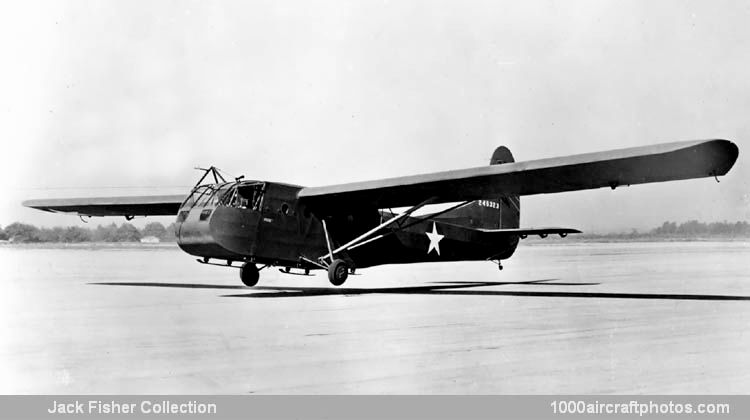Original photo caption:
DESCRIPTION, DIMENSIONS AND PARTICULARS ON THE WACO CG-4A
In general the Waco designed, and engineered CG-4A troop and cargo carrying glider is an externally braced high-wing monoplane of wood and steel tube and fabric covered construction and is manufactured by The Waco Aircraft Company of Troy, Ohio, USA. It isn't at all like the tiny fragile sailplanes once called gliders. The CG-4A has a wing spread of 83 ft 8 in (25.50 m) and has an over-all length of 48 ft 3.75 in (14.73).
The Waco CG-4A carries 15 fully armed and equipped men two of whom act as pilot and co-pilot. As an alternate loading condition the Waco glider will carry a standard US Army Ford or Willys 1/4-ton (500 lb, 227 kg) truck with four men as crew plus two men as extra crew and extra equipment to make up the full disposable load. Another alternate load to the 1/4-ton truck is one standard US Army M3A1, 2.95 in (75 mm) Howitzer and carriage with gun crew of three plus glider crew of two and ammunition and supplies to make up the full available, disposable load.
The Waco CG-4A weighs more than 7,000 lb (3,175 kg) gross when fully loaded and flies as well at 20,000 ft (6,096 m) as at 200 (61 m). It can be towed by an airplane at a speed of 120 mph (193 kmh) or glide lazily at 38 mph (61 kmh) without stalling.
It is equipped with blind flying instruments, oxygen equipment, and most of the complicated devices found on the modern high-speed airplane. With, of course, the important exception, the motor.
The ratio of a Waco CG-4A glider's forward progress due to loss of altitude ranges from 6 to 1 to 30 to 1, depending on wind direction, weight and other variables. This means, however, even at the minimum ratio a glider towed to an altitude of 25,000 ft (7,620 m) could fly more than 25 mls (40 km) into enemy territory without its presence being detected by enemy sound detectors.
The CG-4A Glider was Waco's SECOND war baby. About 10,000 of these will be finished by the end of 1943.
Read the type remarks on page 6902.
